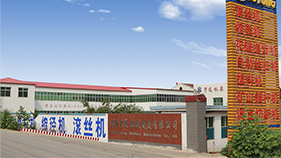
-
 Afrikaans
Afrikaans -
 Albanian
Albanian -
 Amharic
Amharic -
 Arabic
Arabic -
 Armenian
Armenian -
 Azerbaijani
Azerbaijani -
 Basque
Basque -
 Belarusian
Belarusian -
 Bengali
Bengali -
 Bosnian
Bosnian -
 Bulgarian
Bulgarian -
 Catalan
Catalan -
 Cebuano
Cebuano -
 Corsican
Corsican -
 Croatian
Croatian -
 Czech
Czech -
 Danish
Danish -
 Dutch
Dutch -
 English
English -
 Esperanto
Esperanto -
 Estonian
Estonian -
 Finnish
Finnish -
 French
French -
 Frisian
Frisian -
 Galician
Galician -
 Georgian
Georgian -
 German
German -
 Greek
Greek -
 Gujarati
Gujarati -
 Haitian Creole
Haitian Creole -
 hausa
hausa -
 hawaiian
hawaiian -
 Hebrew
Hebrew -
 Hindi
Hindi -
 Miao
Miao -
 Hungarian
Hungarian -
 Icelandic
Icelandic -
 igbo
igbo -
 Indonesian
Indonesian -
 irish
irish -
 Italian
Italian -
 Japanese
Japanese -
 Javanese
Javanese -
 Kannada
Kannada -
 kazakh
kazakh -
 Khmer
Khmer -
 Rwandese
Rwandese -
 Korean
Korean -
 Kurdish
Kurdish -
 Kyrgyz
Kyrgyz -
 Lao
Lao -
 Latin
Latin -
 Latvian
Latvian -
 Lithuanian
Lithuanian -
 Luxembourgish
Luxembourgish -
 Macedonian
Macedonian -
 Malgashi
Malgashi -
 Malay
Malay -
 Malayalam
Malayalam -
 Maltese
Maltese -
 Maori
Maori -
 Marathi
Marathi -
 Mongolian
Mongolian -
 Myanmar
Myanmar -
 Nepali
Nepali -
 Norwegian
Norwegian -
 Norwegian
Norwegian -
 Occitan
Occitan -
 Pashto
Pashto -
 Persian
Persian -
 Polish
Polish -
 Portuguese
Portuguese -
 Punjabi
Punjabi -
 Romanian
Romanian -
 Russian
Russian -
 Samoan
Samoan -
 Scottish Gaelic
Scottish Gaelic -
 Serbian
Serbian -
 Sesotho
Sesotho -
 Shona
Shona -
 Sindhi
Sindhi -
 Sinhala
Sinhala -
 Slovak
Slovak -
 Slovenian
Slovenian -
 Somali
Somali -
 Spanish
Spanish -
 Sundanese
Sundanese -
 Swahili
Swahili -
 Swedish
Swedish -
 Tagalog
Tagalog -
 Tajik
Tajik -
 Tamil
Tamil -
 Tatar
Tatar -
 Telugu
Telugu -
 Thai
Thai -
 Turkish
Turkish -
 Turkmen
Turkmen -
 Ukrainian
Ukrainian -
 Urdu
Urdu -
 Uighur
Uighur -
 Uzbek
Uzbek -
 Vietnamese
Vietnamese -
 Welsh
Welsh -
 Bantu
Bantu -
 Yiddish
Yiddish -
 Yoruba
Yoruba -
 Zulu
Zulu
Circular Thread Rolling Machines for CE Certification Requirements and Compliance Guidelines
CE Certification for Circular Thread Rolling Machines Importance and Process
Circular thread rolling machines have become essential tools in various industries for producing high-precision threaded components. These machines utilize a process known as thread rolling, where flat workpieces are transformed into high-strength threaded parts through the application of pressure, rather than cutting. With the growing demand for these machines in global markets, CE certification has become pivotal, ensuring that products comply with European safety and environmental regulations.
CE certification, or Conformité Européenne, signifies that a product meets the essential requirements set by the European Union (EU) directives. For manufacturers and suppliers of circular thread rolling machines, obtaining this certification is not only crucial for legal compliance but also for establishing trust and credibility among customers. CE marking indicates that the equipment has undergone thorough assessment and meets stringent quality standards, thereby minimizing possible hazards associated with machinery operations.
The process of obtaining CE certification for circular thread rolling machines involves several key steps. Initially, manufacturers must identify the relevant EU directives applicable to their machinery. Common directives that may apply include the Machinery Directive (2006/42/EC), which outlines the safety requirements for all types of machinery, and the Low Voltage Directive (2014/35/EU), which focuses on electrical safety.
Once the applicable directives are identified, manufacturers must conduct a risk assessment to evaluate any potential hazards associated with the operation of the machine. This assessment helps in identifying areas that require safety measures, such as guarding mechanisms, emergency stop functions, and ergonomic considerations. By addressing these risks upfront, manufacturers can ensure a safer operating environment for users.
ce certification circular thread rolling machine

After risk assessment, the next phase involves documenting the compliance of the machine with the relevant safety standards. This includes compiling technical documentation that demonstrates how the machine meets the requirements set out in the applicable directives. Key components of this documentation may include design calculations, manufacturing processes, test results, and user manuals. This comprehensive file becomes crucial during the certification process.
In certain cases, particularly for complex machinery, manufacturers may also be required to work with a notified body—a third-party organization tasked with assessing compliance with the EU directives. The involvement of a notified body may involve audits and inspections, which ensure that the manufacturing processes adhere to the established standards.
Once all assessments and documentations are complete and the circular thread rolling machine meets all necessary requirements, manufacturers can affix the CE mark on their equipment. This mark not only conveys that the machine complies with EU legislation but also opens up access to a broader market, as many clients in Europe require CE certification before considering any equipment purchase.
In conclusion, CE certification for circular thread rolling machines is a fundamental aspect of ensuring product safety and compliance within the EU market. By navigating the certification process meticulously, manufacturers can uphold high standards of quality and reliability, ultimately fostering trust with their customers while expanding their operational reach across European markets.
